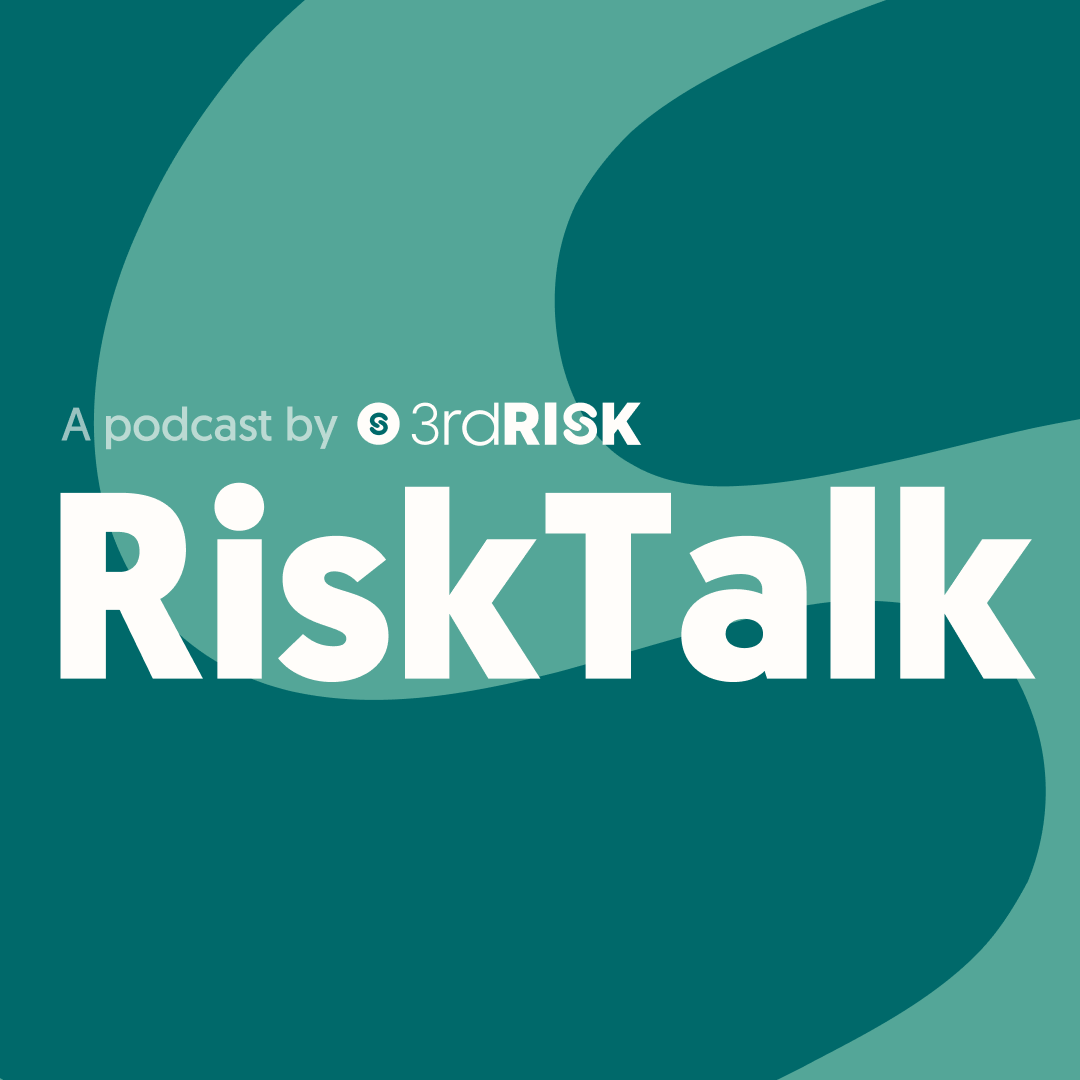Making sense of the RiskTech landscape: Where 3rdRisk fits
Organisations managing DORA and NIS2 compliance typically juggle separate tools for cyber risk, ESG, supply chain visibility, and compliance automation. This creates fragmented workflows and audit gaps. 3rdRisk unifies these capabilities into one multidimensional platform — combining regulatory-ready workflows, AI-powered automation, and collaborative features that turn visibility into action. Learn how we compare to specialised vendors and why leading enterprises choose integrated risk management.

As organisations face mounting regulatory pressure from DORA and NIS2, most are forced to juggle multiple point solutions for cyber risk, compliance automation, ESG monitoring, and supply chain visibility. 3rdRisk unifies these fragmented workflows into a single platform that combines regulatory compliance depth, multidimensional risk intelligence, and intuitive collaboration, helping organisations of all sizes move from visibility to action.
The problem: Specialised tools, fragmented risk management
Regulatory pressure and supply chain complexity have triggered a wave of technology investment. Organisations now deploy separate systems for cyber ratings, compliance audits, ESG reporting, and supply chain mapping. Each tool provides value within its domain, but collectively they create three critical gaps:
- Visibility without assurance. Knowing where suppliers are located doesn't address whether they meet your risk standards.
- Data without workflow. Risk feeds and ratings sit disconnected from the decisions and remediation actions they should inform.
- Single-domain focus in a multidimensional world. Regulations like DORA and NIS2 require integrated views across cyber, operational, legal, and strategic risk, not siloed assessments.
At 3rdRisk, we're often asked how our platform compares to specialised vendors. The answer depends on what you're trying to achieve. Below, we map the landscape and show where integration creates the most value.
Understanding the Risk Tech landscape
Supply chain visibility platforms
Examples: Interos, Everstream, Resilinc
What they do well: These platforms excel at mapping global supply networks and identifying external disruptions, natural disasters, geopolitical events, port closures. They answer the question: "Where are our suppliers and what's happening around them?"
Where 3rdRisk differs: Visibility is the starting point, not the endpoint. 3rdRisk adds the due diligence layer: inherent risk profiling, regulatory assessments, control validation, and mitigation workflows. Organisations don't just see their supply chain, they classify risk, assign ownership, track remediation, and demonstrate compliance to auditors.
In practice: A financial services client uses 3rdRisk to map their payment processors (visibility), assess them against DORA ICT requirements (compliance), monitor their cyber posture over time (assurance), and generate audit-ready reports (governance), all in one workflow.
Cyber risk rating services
Examples: BitSight, SecurityScorecard
What they do well: These vendors provide continuous, non-intrusive monitoring of external cyber posture based on observable data like SSL certificates, DNS health, and breach history.
Where 3rdRisk differs: Cyber ratings are one dimension of a much larger picture. 3rdRisk embeds these scores alongside ESG, financial, operational, and strategic risk data. This multidimensional view helps organisations comply with frameworks like DORA and NIS2, which require balanced risk assessment, not just cyber-only perspectives. We also connect ratings to remediation workflows, turning alerts into action.
In practice: Rather than receiving a supplier's cyber score in isolation, clients see how that score intersects with contract criticality, data processing characteristics, and geographic concentration risk, enabling smarter prioritisation.
Compliance automation tools
Examples: Drata, Vanta, VComply
What they do well: These platforms automate internal control testing, evidence collection, and audit preparation for standards like SOC 2 and ISO 27001.
Where 3rdRisk differs: Most compliance tools stop at the organisation's perimeter. 3rdRisk extends control frameworks to third parties, embedding regulatory requirements like NIS2 and DORA directly into supplier assessments and monitoring. Automated workflows, evidence tracking, and control testing span both internal operations and external vendors, closing the gap that auditors frequently flag.
In practice: A logistics company uses 3rdRisk to assess internal security controls and simultaneously evaluate the same controls across their critical ICT suppliers, maintaining one source of truth for audit readiness.
Data aggregators and screening services
Examples: Refinitiv, LexisNexis, Dow Jones, OpenSanctions
What they do well: These providers deliver comprehensive datasets for sanctions screening, adverse media, financial health, and corporate ownership.
Where 3rdRisk differs: Raw data feeds are valuable but static. 3rdRisk transforms this information into actionable risk signals connected to your workflows. Ownership structures trigger concentration risk alerts. Adverse media findings escalate to the right stakeholders. Financial distress scores inform contract renewal decisions. The platform turns data into intelligence tied to decisions.
In practice: When a supplier appears on a sanctions list, 3rdRisk automatically flags all affected contracts, notifies relationship owners, and initiates contingency planning, rather than simply logging the alert.
Point solution TPRM platforms
Examples: Prevalent, Aravo, OneTrust TPRM
What they do well: These platforms manage supplier onboarding, questionnaires, and basic continuous monitoring.
Where 3rdRisk differs: Point solutions typically focus on initial due diligence or periodic reviews. 3rdRisk supports the complete third-party lifecycle: profiling, assessment, continuous monitoring, remediation, and regulatory reporting. Purpose-built modules like the DORA Register of Information and NIS2 supplier classification go far beyond generic questionnaires, delivering compliance-ready outputs from day one.
In practice: A retail bank deployed 3rdRisk to replace three separate tools (vendor onboarding, cyber monitoring, and contract management) with one integrated system covering initial assessment through ongoing oversight and regulatory reporting.
ESG and sustainability platforms
Examples: EcoVadis, IntegrityNext, Sourcemap
What they do well: These platforms assess suppliers against environmental and social responsibility criteria, often through detailed questionnaires and certifications.
Where 3rdRisk differs: ESG is essential but insufficient on its own. Regulations increasingly require integrated risk views. 3rdRisk unifies ESG with cyber, operational, financial, and strategic risk domains, enabling organisations to manage compliance and sustainability holistically rather than maintaining parallel processes.
In practice: A multinational retailer uses 3rdRisk to evaluate suppliers across carbon footprint, labor standards, cyber security, and financial stability, ensuring no single risk dimension is managed in isolation.
What defines value in this Market
Based on our conversations with CISOs, compliance officers, and procurement leaders across regulated industries, six factors separate platforms that get adopted from those that get abandoned:
1. Multidimensional risk coverage
Regulations like DORA and NIS2 don't recognize artificial boundaries between cyber, operational, and strategic risk. Platforms built for a single domain force organisations to maintain multiple systems and reconcile conflicting data. 3rdRisk was designed from the start to handle integrated risk across all dimensions, cyber, financial, legal, operational, ESG, and strategic, in a unified data model.
2. Built for collaboration, not just analysis
Risk management fails when stakeholders don't engage. Platforms like 3rdRisk prioritises usability with features designed for diverse users: a collaborative supplier portal for two-way communication, configurable branding to reflect organisational identity, and Lexi, our AI assistant that helps non-technical users navigate complex risk data through natural language queries.
3. Speed to value through pre-built regulatory content
Enterprise GRC implementations typically require 6-12 months. 3rdRisk customers go live in days, not months, using ready-made workflows aligned to NIS2, DORA, and ESG frameworks. This means teams deliver tangible compliance progress immediately rather than spending quarters on configuration.
4. European foundation, global capability
Built in the EU for EU organisations, 3rdRisk is GDPR-compliant by design, EU-hosted, and tuned to European data sovereignty requirements. At the same time, the platform scales globally, supporting clients across the UK and US with the same architectural rigor.
5. AI throughout the workflow, not bolted on
AI is a pillar of our solution. It's embedded in how 3rdRisk operates. The platform automatically generates supplier and country risk profiles, populates assessment responses, summarises lengthy contracts and policies, and identifies emerging risk patterns. Customers can even select their preferred AI models, including Mistral AI, to maintain EU data control.
6. Scalable from mid-market to enterprise
Our customer base spans mid-sized organisations to global enterprises including Levi Strauss & Co., Schwarz Group (Lidl and Kaufland), MSIG, PostNL, Selfridges, and Jumbo. This range demonstrates how 3rdRisk bridges accessible usability with enterprise-grade capability, organisations don't outgrow the platform as they mature.
Choosing the right platform: Key questions to ask
As you evaluate solutions, consider these questions:
- Does the platform handle multiple risk domains, or will we need parallel systems?
- Can we go live in weeks rather than quarters?
- Does it connect data to workflows and decisions, or just aggregate information?
- Will business users and suppliers actually engage with it?
- Does it embed our specific regulatory requirements, or offer generic templates?
- Is the vendor building for the long term with demonstrated customer traction?
Learn more about 3rdRisk
The third-party and operational risk technology landscape will continue evolving as regulations mature and supply chains become more complex. Organisations that consolidate fragmented tools into integrated platforms will move faster, reduce overhead, and demonstrate compliance more convincingly.
3rdRisk sits at the intersection of regulatory compliance, multidimensional risk intelligence, and collaborative workflow, combining AI-driven automation with European data sovereignty principles. The result is a platform that helps organisations not only see their risks but act on them with confidence.
Ready to see how 3rdRisk compares to your current approach? Watch a demo or request a demo to explore how we can consolidate your risk technology stack and accelerate compliance readiness.
Looking for an easy way to manage third-party risks?
Get a quick introduction to our third-party risk platform and make informed decisions today.

Want to read more?
Read more helpful content on third-party risk management and compliance.





